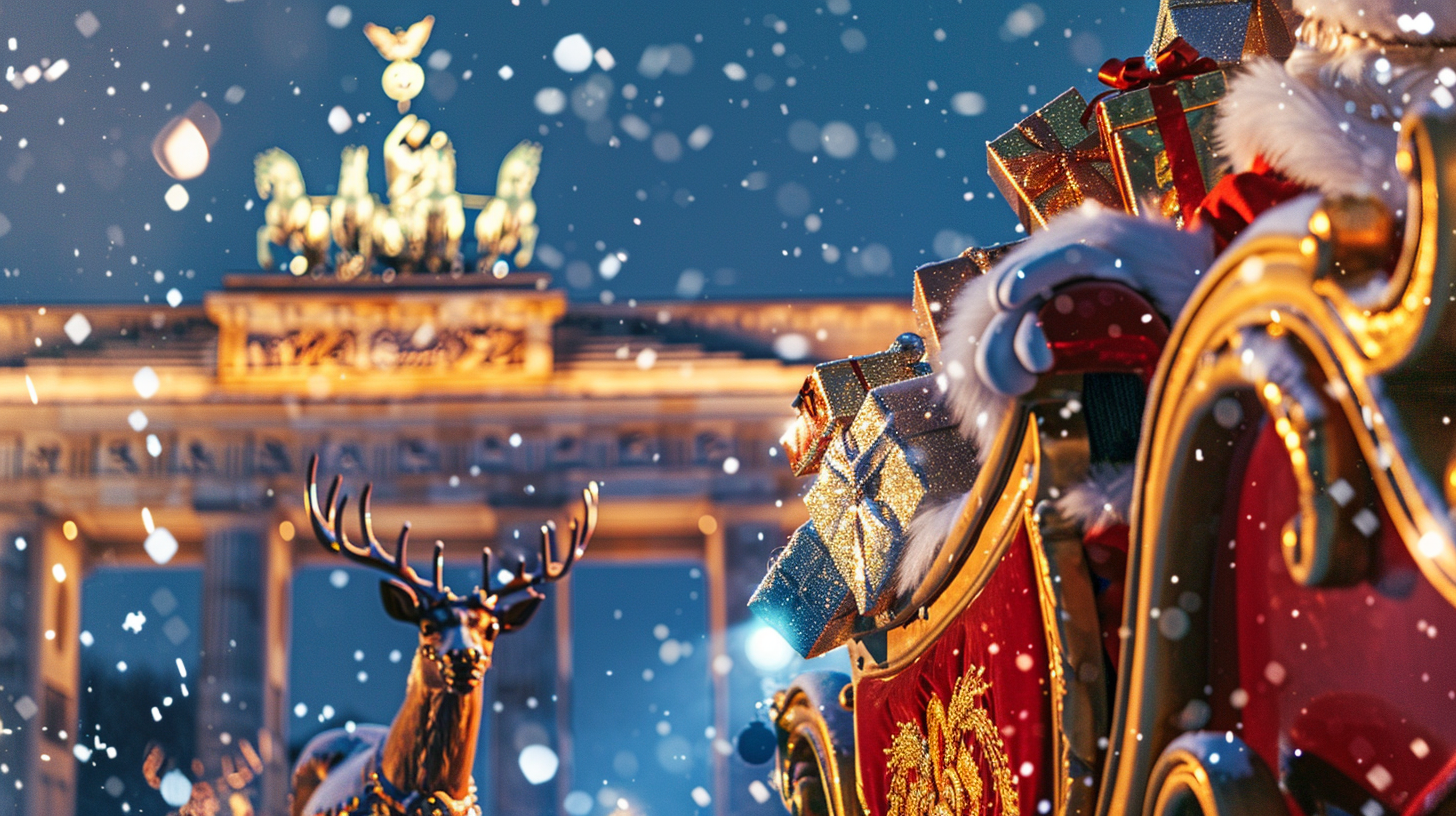Published on: December 24, 2024 / update from: December 24, 2024 - Author: Konrad Wolfenstein

We wish you a wonderful Christmas time - A cosmic event with deep roots: The pagan winter solstice and the Christian Christmas - Image: Xpert.Digital
🎄💫 The magic of light and hope: winter solstice and Christmas as a symbol of new beginnings
✨🌟 Christmas time is a time of pause, reflection and hope. Especially in the dark days of winter, when light is scarce and the world is plunged into apparent calm, many people look for signs of renewal and confidence. The close connection between the winter solstice and Christmas offers a deeper layer of meaning that goes far beyond cultural and religious boundaries.
🌌 A cosmic event with deep roots: the winter solstice
The winter solstice, which occurs annually on December 21st or 22nd, is the astronomical event that marks the shortest day and longest night of the year. From this point on, the light slowly returns, the days become longer, and life seems to stir again. Even in early cultures, the winter solstice was an occasion for rituals and festivals that celebrated the end of darkness and the return of light.
The light was understood as a symbol of life, warmth and hope - a universal image that endures to this day. In many cultures, this moment in the year was considered a turning point, marking the beginning of a new era: the sun, source of all life, returns triumphantly.
🎇 Christmas: Birth of the Light of the World
Christmas, celebrated on December 25th, carries similar symbolism. In the Christian faith, the birth of Jesus Christ is interpreted as the coming of the “light of the world”. Jesus Christ, the Bible says, brings hope and salvation, especially in difficult times. It is no coincidence that his birth falls near the winter solstice - the early Christian church deliberately set this date to use the symbolism of light while integrating existing pagan traditions.
🌿 Historical Connections: Pagan Customs and the Festival of Christmas
Many Christmas traditions celebrated around the world today have their origins in pre-Christian traditions closely linked to the winter solstice.
Evergreen plants and lights: The custom of bringing evergreen branches such as pine branches, mistletoe or ivy into the house symbolizes the immortality of life. Decorating with candles and lights is also deeply rooted in the idea of driving away the darkness and celebrating the return of light.
The Rauhnächte: The twelve nights between December 25th and January 6th, known as Rauhnächte, date back to Celtic and Germanic traditions. This period was seen as a transitional period between years, in which the boundaries between the worlds - the visible and the invisible - were particularly permeable.
📅 Setting the date of Christmas
December 25th as the date for Christmas was first established in the 4th century AD. The Council of Constantinople in 381 AD officially declared this day to be the feast of the Nativity of Christ. Historians suspect that this was also a strategic decision to replace popular pagan winter solstice festivals, such as the Roman festival of Sol Invictus (the birth of the unconquered sun), and thus promote Christianization.
🌟 Light and hope as central messages
The close connection between the winter solstice and Christmas is particularly clear in their shared symbolism of light and hope:
The winter solstice symbolizes the natural cycle of darkness and light. It shows that even after the longest night, the light returns and life awakens again.
Christmas brings this message into a spiritual context. The birth of Christ is understood as light that comes into the darkness of the world and gives new hope.
“The light shines in the darkness, and the darkness has not taken hold of it.” – This Bible verse from the Gospel of John summarizes the essence of the Christmas message.
🎁 Modern Perspectives: A time for reflection and solidarity
Today, for many people, Christmas is not only a religious celebration, but also an opportunity to pause and reflect on what is important: family, friendship, charity and hope for better times. Especially in a world that is often characterized by uncertainty and challenges, the symbolism of light offers a powerful metaphor.
Putting up Christmas trees, lighting candles and sharing gifts are more than just traditions. They remind us that even small gestures of light and warmth can make a big difference.
🔄 A turning point in the course of the year and in life
Both the winter solstice and Christmas symbolize turning points - in a cosmic and personal sense:
The winter solstice marks the beginning of the natural cycle of growth and renewal.
Christmas invites you to pause and nurture hope for a better future, no matter how dark the present seems.
❤️🔥 A personal wish for Christmas time
May this time of reflection and light give you and your loved ones new hope. Just as the sun returns after the longest night, may the days in your life become brighter and the outlook clearer. Let us use the symbolism of light as inspiration to give each other warmth and confidence.
Because in the end, it is the light - be it the cosmic, the spiritual or the interpersonal - that illuminates our hearts and brings us together.
Merry Christmas and a wonderful winter time!

